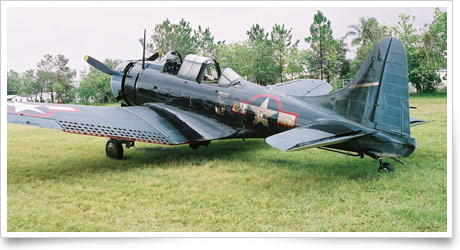| ||||||
| SBD glider |
| |||||
| Sponsored by: | ||||||
| Click here for this week’s custom content. | ||
FEATUREDSBD glider
| ||
GA NEWS | |||||||||||||||||||||||||||||||||||||||||||||||||||||||||||
| | Your IFR rating in 10 days at your location, IFR finish-up in as little as 3 days! Professional teachers and our own curriculum. 30 years experience. G1000 and Avidyne Entegra IFR specialists. Put it on your calendar NOW. 800-435-9437, www.iflyifr.com |
 Pilot sees new general aviation role in Haiti relief
Pilot sees new general aviation role in Haiti relief
Any general aviation pilot who has wanted to take action to help ease the suffering in earthquake-stricken Haiti but doesn’t know how might want to talk to Carl Works. Works, an AOPA member from Pompano Beach, Fla., is the founder of two organizations that had been active in Haiti before last year’s earthquake and now support three orphanages, two schools, and a medical clinic in the devastated Caribbean nation. When the earthquake struck, “I watched the help come in with the TV cameras, and then leave just as fast,” he said in a recent e-mail message to AOPA urging pilots to get involved in continuing relief work. Read more >>
Mojave airport event to feature AOPA’s Barry Schiff
AOPA Pilot contributor Barry Schiff will be the guest of honor at the Mojave, Calif., Transportation Museum’s Plane Crazy Saturday event on Jan. 15. Schiff, a 27,000-hour pilot whose airline career spanned 34 years flying aircraft from the Lockheed Constellation to the Boeing 747, will appear as the event’s Pilot of the Month at the Mojave Air and Space Port. Schiff holds five world speed records and numerous honors for his contributions to aviation safety. Read more >>
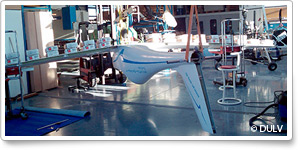 Elektra One rolls out
Elektra One rolls out
German manufacturer PC-Aero has rolled out its new Elektra One, an electrically powered single-seater that was first announced in April 2010. Using lithium-polymer batteries, and a motor with 16 kilowatt (21 horsepower) takeoff power, the Elektra One should be able to cruise at 86 knots and fly for three hours, said PC-Aero’s Calin Gologan. The brushless motor’s electronic controls let the pilot set the propeller for flight at a constant torque setting, in much the same way that conventional constant-speed propellers can be set for optimum climb and cruise power. Read more >>
WAI hall of fame to honor aviation pioneers
Pioneers in military and civilian aviation are among the 2011 inductees into the Women in Aviation, International (WAI) Pioneer Hall of Fame. WAI President Peggy Chabrian, Department of Veterans Affairs Assistant Secretary for Public and Intergovernmental Affairs L. Tammy Duckworth, astronaut Maj. Gen. Susan J. Helms, and Women Airforce Service Pilots Hazel Ying Lee and Mary Ann Martin Wyall comprise the group to be inducted during WAI’s Annual International Conference Feb. 24 through 26 in Reno, Nev. Read more >>

 AOPA Now: A look back at 2010
AOPA Now: A look back at 2010
At the dawn of a new year, AOPA President Craig Fuller took a visual tour of some of the more notable parts of 2010. Watch the slideshow >>
 Hover Power: Too close to the rotor
Hover Power: Too close to the rotor
Late one night aviation blogger Tim McAdams was returning to base in an EMS helicopter and, on short final, noticed water spraying onto the helipad. It was a ground-based helipad and the temperature had dropped below zero, causing a lawn sprinkler pipe to burst. After a radio call, the water was shut off and he started his approach again. There was only a small corner of the pad that was not wet, and with the temperature below freezing, he decided to put the helicopter in that dry spot. Read more >>
CORRECTION: In the Dec. 31 edition of AOPA ePilot, we incorrectly identified the type of aircraft involved in a crash outside of Buffalo, N.Y., in 2009. The aircraft was a turboprop.
![]()
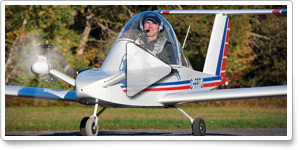 Big fun in a small package
Big fun in a small package
It has a 16-foot wingspan; weighs just 185 pounds; has a pair of two-stroke, 15-horsepower engines; climbs at 1,000 fpm; and has a roll rate of 200 degrees per second. This tiny aviation curiosity is the CriCri. Designed in the late 1960s by French aeronautical engineer Michel Columban, it first flew on July 19, 1973, and jaws have been dropping ever since anywhere a CriCri makes an appearance. David and Ronald Smith’s dropped when they first saw the CriCri in a 1974 issue of Air Progress magazine. Watch AOPA Live® >>
AOPA Live tops one million views in 2010
AOPA Live, AOPA’s newest way to communicate with pilots, saw phenomenal growth during 2010—its first full calendar year—topping one million views for the year. What began as a way to share the experience of attending AOPA Aviation Summit has grown into something much larger, with 1,065,000 views. Read more >>
For daily news updates, see AOPA Online.
| | Go to Glass with the Garmin G500™ Trade in your instrument six-pack for twin 6.5-inch displays. The G500’s solid-state AHRS, moving-map graphics and built-in terrain and obstacle databases, as well as add-ons like synthetic vision, weather and traffic, enhance your situational awareness and safety. Learn more. |
Safety & Proficiency
Too low in the dark
Among the most baffling aviation accidents are those in which expert pilots get caught trying to fly VFR into IMC. Thousands of hours of flight time don’t reduce the risks of trying to slip between descending ceilings and rising terrain, especially after dark—and while experience might be expected to increase a pilot’s respect for those risks, the record suggests that this isn’t always the case. Early in the evening of Nov. 15, 2009, a Piper Cherokee 140 flew into a mountainside in northwest New York, killing both on board. Read more in this special report from the Air Safety Institute.
 Med check
Med check
It finally happened. That winter cold that you thought you had ducked again has hit you, and it feels like it is going to hang on for a while. Nor could it have come at a worse moment. Your schedule is packed—and keeping tomorrow’s appointment requires flying. Now you have some key decisions to make. First, make a good call on your fitness to act as pilot by applying the “I’m safe” mnemonic you learned in ground school. If you opt to fly after taking an over-the-counter or prescription medication, another question arises: Have you ensured that the med is permitted by the FAA? Read more >>
| | Join the Evolution Available in one, two or three display configurations, the flexible Aspen Evolution system is designed and built to be easy to install, easy to use, and easy to own. Read about our current customers at www.aspenavionics.com/customergallery. |
New seminar features true stories of close calls in the air
At one time or another, many of us have found ourselves in “uncomfortable” situations aloft. In some cases the problems couldn’t be predicted; in others the warnings show up in hindsight like neon signs. Either way, there are things to be learned. That’s the idea behind "Close Calls, Lessons Learned,” the Air Safety Institute’s brand-new seminar. You’ll meet five real pilots sharing true stories of their most harrowing moments aloft in hopes that you might benefit from their experiences. The seminar run starts Jan. 10: See when it’s coming to your area.
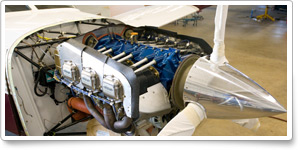 Lift the cowling with ‘Engine and Propeller’ course
Lift the cowling with ‘Engine and Propeller’ course
Have you ever wondered what you don’t know about what’s going on under that cowling? Sure, the engine may purr when you start it, but what if it begins to run rough? An understanding of engine and propeller operations can help cure your curiosity, teach you a thing or two about how things work, and minimize dangerous wear and costly repair to the engine and prop. This course qualifies for AOPA Accident Forgiveness and the FAA Wings program. Take the course >>
| | Get to the Fun Faster with Weekend Rentals from $20 a day at Alamo®. Alamo is offering weekend rentals from $20 a day for AOPA members, January 2nd through February 6, 2011. All you need to do is reserve an economy to premium car at participating US or Canada locations and keep it over a Saturday night. A 4-day maximum rental applies and you must return the car by Monday, or higher daily rates apply. Click here for more details. |
 Air Safety eJournal: On the margin
Air Safety eJournal: On the margin
What happens when we operate an aircraft at or close to the margin? Most of the time it works. This can lead to some not-so-desirable thought processes because safety may be compromised. The concept of margins may apply to a recent American Airlines incident in Jackson, Wyo., where a Boeing 757 ran off the end of Runway 19 in snowy conditions while landing at Jackson Hole Airport. The Air Safety Institute was recently engaged in a meeting with the FAA and some airline operators discussing the abnormally high rate of runway overruns at Jackson Hole. Read more >>
Flight Instructor Refresher Clinics | Air Safety Institute Safety Seminars | |||||||||
For a complete schedule, see AOPA Online. Can’t make it in person? Sign up for the CFI Refresher Online. |
Topics vary—for details and a complete schedule, see AOPA Online. | |||||||||
| | Stay healthy, fly longer. Enroll in the AOPA Medical Services Program and gain access to numerous resources designed to keep you in the air. Plus, receive assistance from our Medical Certification Specialists for FAA-related medical issues. |
ADVOCACY
Aircraft use tax repeal effort relaunched in Maine
With a new majority in place, the Maine Senate will take up a bipartisan effort to repeal the notorious aircraft use tax that can slap out-of-state owners of new aircraft with bills for up to 5 percent of the aircraft’s value. State Sen. Stan Gerzofsky, a Democrat from Brunswick, and the Senate’s new president, Kevin Raye, a Republican, have begun work on separate drafts of legislation that would repeal the tax Maine imposes on the value of visiting aircraft weighing less than 6,000 pounds that spend more than 20 days in the state within a year of purchase. Read more >>
 Buying Sky Manor
Buying Sky Manor
Pilot conversations at Sky Manor Airport in Pittstown, N.J., one afternoon didn’t focus on fun places to fly or good airport restaurants. Instead, the topic was the future of their home field. The airport was in financial trouble and it was up for sale, and there were rumors of a buyer. What would happen to the scenic, rural airport? What would happen to the relaxed atmosphere? What would happen to the hangar rents? Rob Marookian had an idea to purchase the airport. Read more >>
| | AOPA Aircraft Financing Program offers NEW lower rates Our goal is to get pilots into the aircraft of their dreams. To help make aircraft ownership more attainable, we just lowered our rates to make monthly payments more affordable. For more information, or to have a representative call you to discuss financing, go to www.aopa.org/loans. |
Marine-sanctuary overflight rule comment deadline extended
The National Oceanic and Atmospheric Administration will accept comments until Feb. 7, 2011, on its proposed rule to restrict low-altitude flights over four national marine sanctuaries, granting an extension requested by AOPA in December. AOPA reported on Dec. 15 that the NOAA proposal could have substantial impact on general aviation, and appears to conflict with the FAA’s sole authority to regulate airspace of the National Airspace System. The proposed rule would impose unspecified penalties against pilots violating altitude restrictions above sanctuaries in California and Washington state. Read more >>
Aviation legislative caucus gains strength in Ohio
When AOPA members in Ohio learned that a state senator was organizing a legislative aviation caucus, they responded to by encouraging their own lawmakers to join. State Sen. Jason Wilson knows that general aviation supports jobs, the economy and vital services in every corner of Ohio, a state with more than 170 public-use airports and 17,000 pilots. That made it important for GA-supportive legislators in the state—with its rich aviation history—to band together “to foster and protect this critical industry.” Read more >>
| | The Road Calls, and So Do the Savings When you’re ready to go, Enterprise makes it easy with great cars and great deals. Take advantage of your AOPA membership and enjoy a discount on our everyday low rates. Click here to learn more. |
Member Benefits
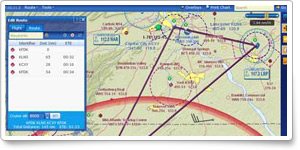 AIFP 2.0 nearing release, available now as a beta
AIFP 2.0 nearing release, available now as a beta
More than 18 months in the making, the next major release of the AOPA Internet Flight Planner (AIFP) is now available to members as a beta. When released, version 2.0 will include many new features pilots have been asking for, along with being faster, easier to use, and iPad-compatible. Members can try it now (you may be prompted to log in). Among the improvements in AIFP 2.0 is the addition of rubber banding support in Firefox, Chrome, Safari, and Internet Explorer 8. This feature allows dragging the route line on the chart to "snap" it to a new waypoint. Read more >>
AOPA member keeps flying with AOPA help
Ken Field has been a pilot since he was a teenager. In fact, he had his pilot certificate before his driver’s license. Now his flying is almost exclusively for business purposes. When a medical condition prompted the FAA to require Field to undergo much additional testing, his friend mentioned AOPA’s Medical Services Program to him, suggesting he should take advantage of it. “JoAnn Wilson was my advocate, and she did a terrific job. I didn’t know the best way to interact with the FAA, but she did,” Field said. Read more >>
| | FREE Video Tip! — Courses for Beginner to Pro! Click for a Free Video Training Tip and find a course to achieve your next goal, or to make your flying safer and more rewarding. Not sure? Call us at 800-854-1001 and talk to one of our pilot training advisors. |
AOPA Career Opportunities
Ever dream of turning your passion for aviation into a career? We’re looking for a vice president of new product development and interactive marketing, business analyst, financial analyst, and IT project architect. To learn more about other AOPA career opportunities, visit AOPA Online.
Community
Picture PerfectAOPA’s online photo gallery allows you to upload your own aviation photography as well as view, rate, and comment on others’ photos. Your favorite aviation images from AOPA Pilot are still available online through this new gallery. Take a look, and submit your own photos! | The local municipality has just completed an airstrip (T37), but it looks like hangar construction will be up to individuals on land leased from the airport. Do you have advice on clearances and doors or other tips? Any and all input is appreciated. Share yours >>
| |
Engage in AviationCheck out user-submitted events from your region. To include an event or to search all events in the calendar, visit AOPA Online. AOPA does not endorse the events listed below, nor have ePilot editors edited the submissions. AOPA assumes no responsibility for events listed. | ||
| |
QUIZ ME!Here’s a question asked by an AOPA member who contacted our aviation services staff through the AOPA Pilot Information Center. Test your knowledge.
Question: I recently returned from overseas after serving with the U.S. military. My flight instructor certificate has expired. Will I have to take another practical test to reinstate my CFI privileges?
Answer: Individuals who serve in the U.S. military or as a civilian outside the United States in support of the U.S. Armed Forces have a six-calendar-month relief period after returning home to renew a CFI certificate that has expired while on duty. SFAR 100-2 in Part 61 of the federal aviation regulations describes the required documents which must be presented to the appropriate flight standards district office for renewal. Got a question for our aviation services staff? The AOPA Pilot Information Center is a service available to all members as part of the annual dues. Call 800/USA-AOPA (800/872-2672), or e-mail to [email protected]. | |
|
| |
| |
| | ||||
| ePilot Editor: Sarah Brown | Contributors: Alyssa Miller Jill W. Tallman Warren Morningstar Alton K. Marsh | | Production Team: William Rockenbaugh Lezlie Ramsey Melissa Whitehouse Mitch Mitchell | Advertise in ePilot: |
| Member Tools: Send feedback | Update member profile/e-mail | Unsubscribe | ePilot Archive © 2011 Aircraft Owners and Pilots Association | 421 Aviation Way Frederick, MD 21701 | Phone 800/USA-AOPA | Fax 301/695-2375 | ||||




